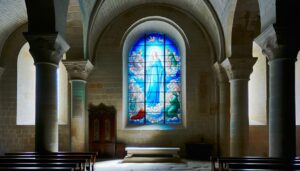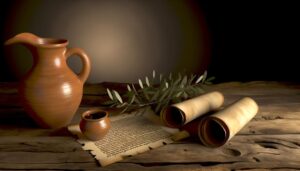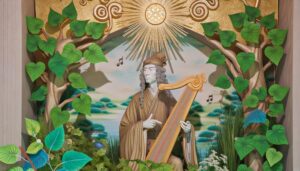Plants in the Bible and Their Meaning: Nature and Faith
Plants in the Bible carry rich symbolic meanings that reflect both historical contexts and theological insights. The olive tree, seen in Genesis 8:11 and Romans 11:17-24, symbolizes peace, renewal, and divine grace.
The fig tree, mentioned in Micah 4:4 and Mark 11:12-14, represents prosperity, judgment, and the call for repentance. Mustard seeds, as described in Matthew 13:31-32 and Luke 17:6, illustrate the potential of faith and the growth of God’s kingdom.
Cedar of Lebanon signifies strength and resilience (1 Kings 6:9, Psalm 92:12), while the palm tree embodies victory and righteousness (John 12:13, Psalm 92:12). Exploring these symbols further reveals deeper spiritual truths.
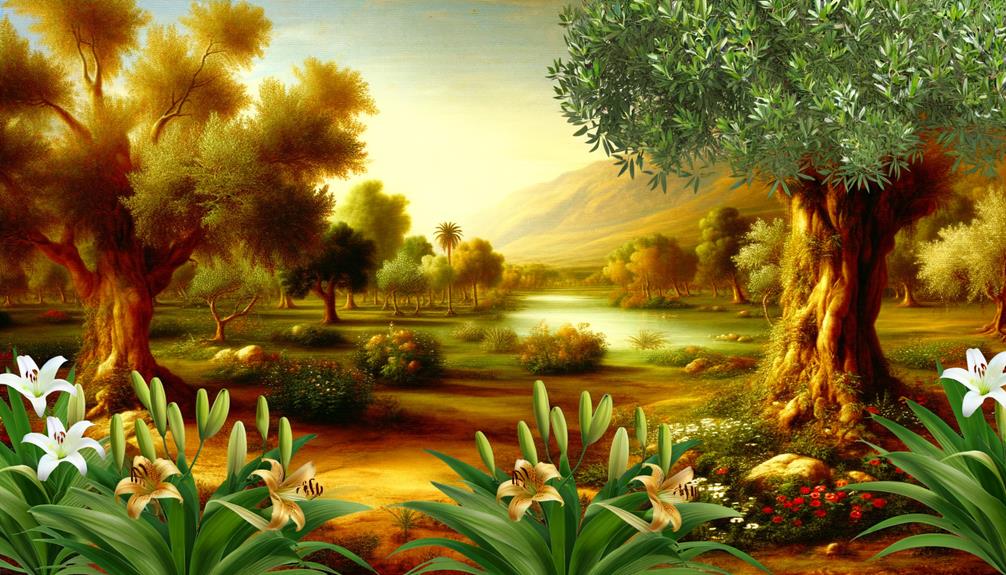
Key Takeaways
- The olive tree symbolizes peace, renewal, and divine grace, often associated with anointing and inclusion in biblical texts.
- The fig tree represents abundance and prosperity, but also serves as a symbol of judgment and the necessity of repentance.
- The mustard seed illustrates faith’s potential for growth, emphasizing the transformative power of even the smallest belief in the kingdom of God.
- The vine and branches metaphor highlights spiritual dependence on Christ, signifying mutual nourishment and divine grace.
Olive Tree
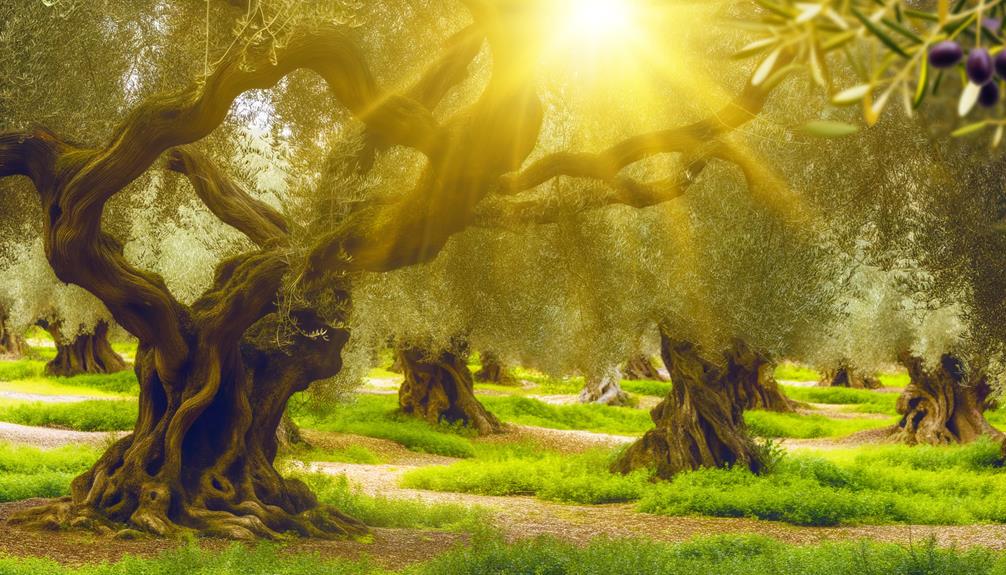
The olive tree, a symbol of peace and prosperity, holds significant theological and historical importance throughout the Bible, prominently featured in passages such as Genesis 8:11 and Romans 11:17-24.
In Genesis 8:11, a dove brings an olive leaf to Noah, signaling the end of the flood and God’s restored favor.
In Romans 11:17-24, Paul uses the olive tree to illustrate Gentiles being grafted into the spiritual covenant originally given to Israel.
The olive tree’s enduring nature and fruitful yield embody divine blessings and covenantal faithfulness.
Historically, olive oil was used for anointing, signifying consecration and the Holy Spirit’s presence.
Consequently, the olive tree encapsulates themes of renewal, inclusion, and divine grace, imbuing it with profound scriptural resonance.
Fig Tree
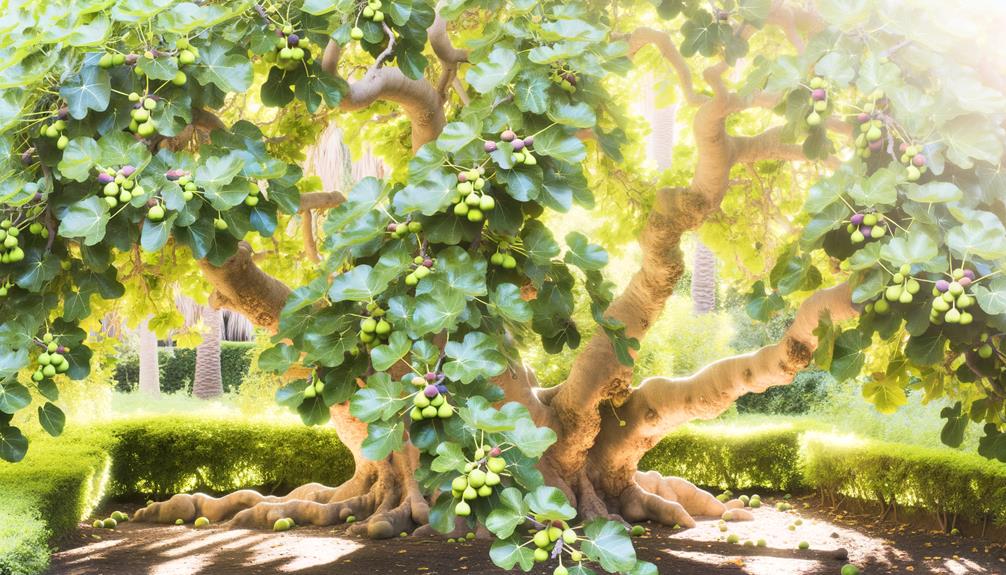
In parallel to the olive tree, the fig tree holds a prominent place in biblical narratives, symbolizing abundance, prosperity, and sometimes judgment. Within the Old Scripture, the fig tree often denotes peace and divine blessing (Micah 4:4). Conversely, in the New Scripture, Jesus cursing the barren fig tree (Mark 11:12-14) embodies divine judgment and the consequences of spiritual unfruitfulness.
| Scriptural Reference | Symbolic Meaning |
|---|---|
| Micah 4:4 | Peace and divine blessing |
| Jeremiah 24:3-8 | Differentiation of people |
| Mark 11:12-14 | Judgment and unfruitfulness |
| Luke 13:6-9 | Patience and repentance |
The fig tree’s dual symbolism underscores its theological richness, offering profound insights into divine expectations and human responsibility.
Mustard Seed
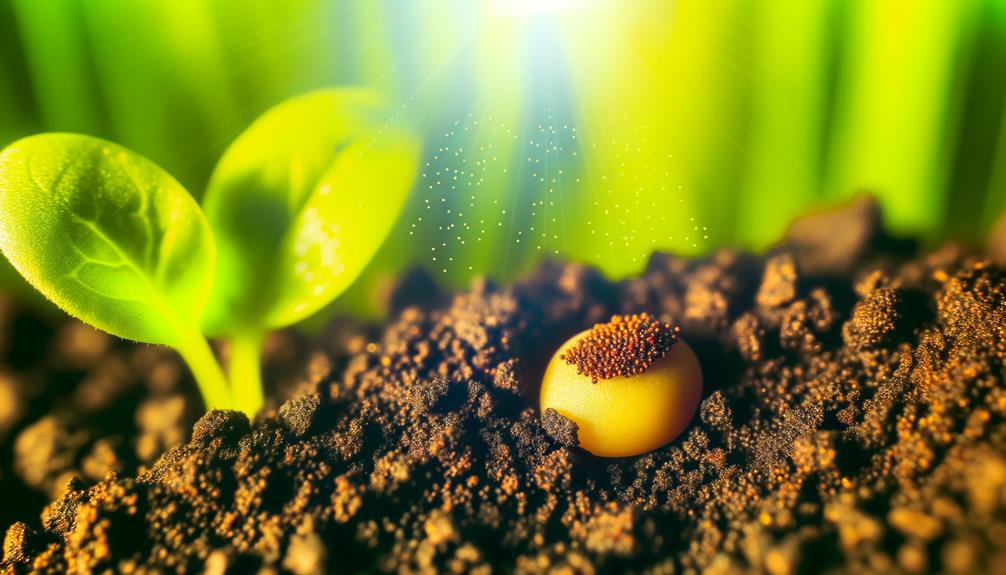
Although small in size, the mustard seed is frequently cited in biblical texts to illustrate the concepts of faith, growth, and the kingdom of God.
In Matthew 13:31-32, Jesus likens the kingdom of heaven to a mustard seed, which, despite its minute beginnings, grows into a large tree, providing shelter for birds. This metaphor underscores the transformative power of faith and divine influence.
Historically, mustard plants were known for their rapid growth in the ancient Near East, making them an apt symbol for potential and expansion.
Theologically, the mustard seed signifies that even the smallest measure of faith can yield profound spiritual growth and impact, as emphasized in Luke 17:6, where faith as small as a mustard seed can move mountains.
Vine and Branches
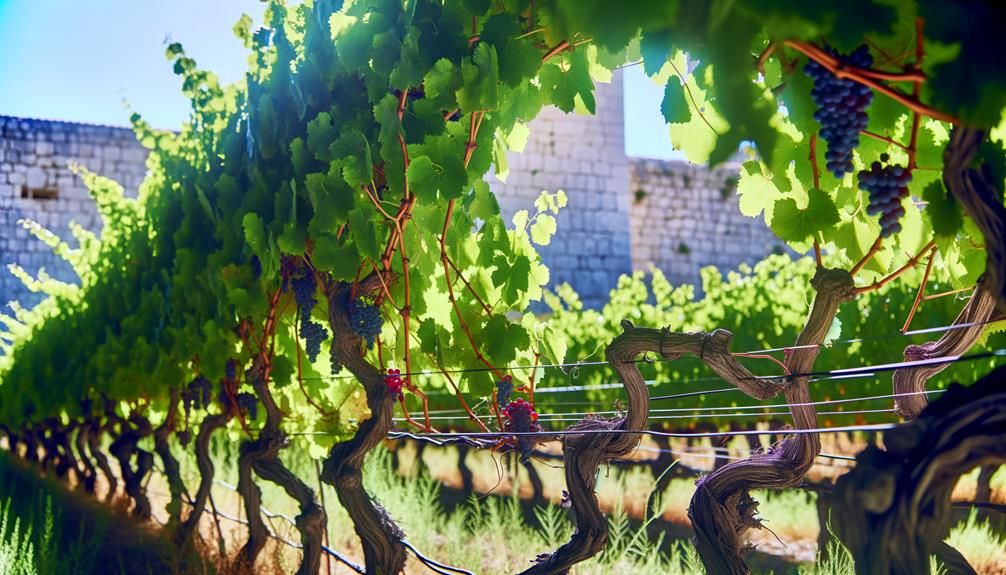
Rooted in the rich tapestry of biblical imagery, the metaphor of the vine and branches, as found in John 15:1-8, encapsulates themes of spiritual dependence, divine nourishment, and communal unity within the body of Christ.
Historically, vines were fundamental to agrarian life in ancient Israel, symbolizing prosperity and divine blessing (Psalm 80:8-16).
Theologically, Jesus’ declaration, ‘I am the true vine,’ signifies the crucial connection between believers and Christ, emphasizing that spiritual liveliness and fruitfulness stem from this relationship.
Scripturally, the imagery underscores mutual dependence: as branches thrive only when connected to the vine, so believers flourish through abiding in Christ.
This passage therefore offers a profound reflection on spiritual interconnectedness and the sustenance provided by divine grace.
Cedar of Lebanon

Renowned for its majestic height and enduring quality, the Cedar of Lebanon holds significant symbolic and historical importance within biblical literature, often representing strength, durability, and divine craftsmanship. This iconic tree is mentioned frequently in Scripture, underscoring its profound theological and cultural relevance.
- Strength and Majesty: Cedars of Lebanon are depicted in 1 Kings 6:9, where Solomon’s Temple was built using their wood, symbolizing divine strength and grandeur.
- Durability: Psalm 92:12 likens the righteous to the cedar, emphasizing their resilience and steadfastness.
- Divine Craftsmanship: Ezekiel 31:3-4 uses the cedar metaphorically to describe Assyria’s power and divine favor.
- Symbol of Prosperity: Isaiah 2:13 references the cedar as a symbol of national pride and prosperity, revealing its esteemed status.
The Cedar of Lebanon consequently embodies enduring spiritual and material splendor.
Palm Tree

The palm tree, frequently mentioned in the Bible, carries significant historical and theological symbolism, representing victory and righteousness.
In John 12:13, the people’s use of palm branches during Jesus’ triumphal entry into Jerusalem epitomizes its association with victory and celebration.
Similarly, Psalm 92:12 likens the righteous to a flourishing palm tree, illustrating the enduring and prosperous nature of those who live in accordance with God’s will.
Symbol of Victory
In biblical times, the palm tree served as a powerful symbol of victory and triumph, as evidenced in scriptures such as John 12:13 where palm branches were laid before Jesus during His triumphal entry into Jerusalem. This symbol is rooted in various historical and theological contexts:
- Historical Celebrations: Palms were integral to Jewish festivals, such as the Feast of Tabernacles (Leviticus 23:40).
- Military Triumphs: Victorious soldiers were often welcomed with palm branches, symbolizing their success.
- Heavenly Imagery: Revelation 7:9 depicts a multitude holding palm branches, signifying eternal victory and salvation.
- Messianic Prophecy: The use of palm branches in John 12:13 fulfills Zechariah 9:9, heralding the arrival of the Messiah.
Thus, the palm tree encapsulates a profound message of divine victory and deliverance.
Representation of Righteousness
Palm trees are frequently portrayed in biblical literature as symbols of righteousness, drawing on their upright growth and fruitful nature as metaphors for moral integrity and spiritual prosperity.
Psalm 92:12 states, ‘The righteous shall flourish like the palm tree,’ emphasizing the palm’s enduring and steadfast nature.
Historically, the palm tree was a crucial source of sustenance and shelter in arid regions, symbolizing God’s provision and care for the righteous.
Theologically, the palm’s ability to thrive in harsh conditions mirrors the resilience of faith amidst adversity.
In the context of ancient Israel, the palm tree’s towering presence and abundant fruit served as a visual representation of a life lived in accordance with divine precepts, embodying divine favor and uprightness.
Conclusion
The juxtaposition of the Olive Tree’s peace, the Fig Tree’s judgment, the Mustard Seed’s faith, the Vine and Branches’ unity, the Cedar of Lebanon’s strength, and the Palm Tree’s victory offers profound theological insights.
Through scriptural references, these plants not only reveal historical contexts but also symbolize spiritual truths.
They reflect the intricate relationship between nature and divine teachings, illustrating a rich tapestry of meaning that transcends time, providing enduring lessons for faith and life.


